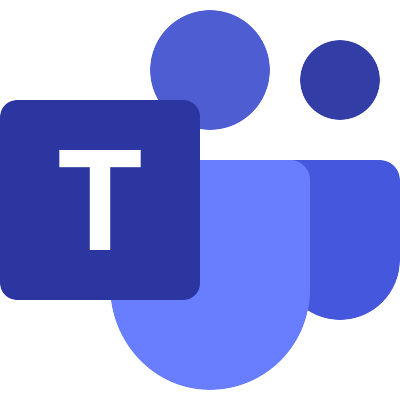Microsoft Teams Admin and Trengo integration
Save yourself the work of writing custom integrations for Microsoft Teams Admin and Trengo and use n8n instead. Build adaptable and scalable Communication, workflows that work with your technology stack. All within a building experience you will love.


How to connect Microsoft Teams Admin and Trengo
Create a new workflow and add the first step
In n8n, click the "Add workflow" button in the Workflows tab to create a new workflow. Add the starting point – a trigger on when your workflow should run: an app event, a schedule, a webhook call, another workflow, an AI chat, or a manual trigger. Sometimes, the HTTP Request node might already serve as your starting point.
Build your own Microsoft Teams Admin and Trengo integration
Create custom Microsoft Teams Admin and Trengo workflows by choosing triggers and actions. Nodes come with global operations and settings, as well as app-specific parameters that can be configured. You can also use the HTTP Request node to query data from any app or service with a REST API.
Supported API Endpoints for Microsoft Teams Admin
Create team
Allows you to create a new team in Microsoft Teams.
List teams
Retrieves a list of all teams that the user is a member of.
Remove member
Remove a member from a team.
Update team
Update the properties of a team.
Create channel
Allows you to create a new channel in an existing team.
Send chatMessage
Allows you to send a chat message to a chat thread.
Create workforce integration
Allows you to create an integration for workforce management.
Create workforceIntegration
Creates a new workforce integration.
Create teamworkTag
Allows you to create a new teamwork tag.
Create onlineMeeting
Allows you to create a new online meeting.
Create onlineMeeting
Creates a new online meeting.
Create online meeting
Creates a new online meeting.
Get online meeting
Retrieves the details of a specific online meeting.
Update online meeting
Updates the properties of an existing online meeting.
Delete online meeting
Deletes a specific online meeting.
Create or get online meeting
Creates a new online meeting or retrieves an existing one.
List online meeting transcripts
Lists the transcripts associated with an online meeting.
List online meeting recordings
Lists the recordings associated with an online meeting.
Create onlineMeeting
Create an online meeting on behalf of a user.
Create onlineMeeting
Create an online meeting on behalf of a user.
Create online meeting
Creates an online meeting for a user using a token.
Get onlineMeeting by meeting ID
Retrieve an online meeting using meeting ID with delegated and app permission.
Get onlineMeeting by user ID
Retrieve an online meeting using meeting ID with delegated and app permission.
Get onlineMeeting by videoTeleconferenceId
Retrieve an online meeting using videoTeleconferenceId with app permission.
Get onlineMeeting by joinWebUrl
Retrieve an online meeting using joinWebUrl with delegated and app permission.
Get onlineMeeting by user ID using joinWebUrl
Retrieve an online meeting using joinWebUrl with delegated and app permission.
Get onlineMeeting by joinMeetingId
Retrieve an online meeting using joinMeetingId with delegated and app permission.
Get onlineMeeting by user ID using joinMeetingId
Retrieve an online meeting using joinMeetingId with delegated and app permission.
Get attendee report by meeting ID (deprecated)
Retrieve the attendee report of a Teams live event using meeting ID with delegated and app permission.
Get attendee report by user ID (deprecated)
Retrieve the attendee report of a Teams live event using meeting ID with delegated and app permission.
Get online meetings
Retrieve a list of online meetings based on specified filters.
Retrieve online meeting
You can retrieve meeting information via meeting ID with either a user or application token.
Get online meeting
Retrieves an online meeting by its ID.
List online meetings
Lists online meetings for the logged-in user based on the JoinWebUrl filter.
List online meetings
Retrieve a collection of online meetings for a user.
Retrieve online meeting
Retrieve meeting information using the joinMeetingId.
List online meetings
Retrieve a list of online meetings for a user with a specific filter.
Get attendee report
Retrieves the attendee report for a specified online meeting.
Create schedule
Creates a new schedule within the scheduling groups.
Create shift
Creates a new shift within the schedule.
Create timeOff
Creates a new time off entry.
List learningProviders
Retrieves a list of learning providers.
List learningContents
Retrieves a list of learning contents for a specific provider.
Get user profile
Retrieve the profile of a user.
Get user manager
Get the profile information for a user's manager.
Get user direct reports
Retrieve the IDs of a user's direct reports.
Set automatic replies
Set automatic replies when a user is away from the office.
Get relevant people
Get the people who are most relevant to a user.
List user's OneDrive files
Access a user's files on OneDrive.
Get user calendar
Access a user's calendar on Exchange Online.
Find meeting times
Determine the best time to meet with a user's team.
Subscribe to calendar changes
Subscribe to and track changes in a user's calendar.
Track event changes
Tell the user when they're spending more than 80% of their time in meetings.
List user tasks
Find the tasks assigned to a user in Planner.
Start a new conversation
Start a new conversation in the Microsoft 365 group.
Get default notebook
Get the default notebook for the group.
Create page
Create a page in the default notebook.
Create online meeting
Creates a new online meeting.
Get online meeting
Retrieves the details of an online meeting.
Update online meeting
Updates the properties of an online meeting.
Delete online meeting
Deletes an online meeting.
Create or get online meeting
Creates or retrieves an online meeting.
List transcripts of online meeting
Lists all transcripts for an online meeting.
List recordings of online meeting
Lists all recordings for an online meeting.
Get onlineMeeting
Retrieve the properties and relationships of an onlineMeeting object.
To set up Microsoft Teams Admin integration, add the HTTP Request node to your workflow canvas and authenticate it using a generic authentication method. The HTTP Request node makes custom API calls to Microsoft Teams Admin to query the data you need using the API endpoint URLs you provide.
See the example hereThese API endpoints were generated using n8n
n8n AI workflow transforms web scraping into an intelligent, AI-powered knowledge extraction system that uses vector embeddings to semantically analyze, chunk, store, and retrieve the most relevant API documentation from web pages. Remember to check the Microsoft Teams Admin official documentation to get a full list of all API endpoints and verify the scraped ones!
Supported API Endpoints for Trengo
List all tickets
Retrieve a list of all tickets.
Create a ticket
Create a new ticket in the system.
Assign a ticket
Assign an existing ticket to a user.
Close a ticket
Close an existing ticket.
Reopen a ticket
Reopen a previously closed ticket.
List all messages
Retrieve a list of all messages associated with tickets.
Delete a ticket
Remove a specific ticket.
List all tickets
Retrieve a list of all tickets.
Assign ticket
Assign a ticket to a user.
Close ticket
Close an existing ticket.
Reopen ticket
Reopen a previously closed ticket.
Delete ticket
Delete a specific ticket.
List contacts
Retrieve a list of all contacts.
Create a contact
Create a new contact in the system.
Delete a contact
Remove a specific contact.
List contacts
Retrieve a list of all contacts.
Create a profile
Create a new profile in the system.
List profiles
Retrieve a list of all profiles.
List profiles
Retrieve a list of all profiles.
Import text message
Import a text message into the system.
List all voip calls
Retrieve a list of all VoIP calls made.
Get a voip call
This endpoint retrieves details of a specific voip call.
List all help centers
Retrieve a list of all help centers available.
Create a help center
This endpoint creates a new help center.
List all quick replies
Retrieve a list of all quick replies created.
Create a quick reply
This endpoint creates a new quick reply.
List all labels
Retrieve a list of all labels.
Create a label
Create a new label.
Delete a label
Remove a specific label.
List all users
Retrieve a list of all users.
Create a user
This endpoint creates a new user.
Create a category
This endpoint creates a new category.
Get category
Retrieve a specific category.
Update category
Update an existing category.
Create an article
This endpoint creates a new article.
List articles
Retrieve a list of all articles.
Get article
Retrieve a specific article.
Update article
Update an existing article.
Create a custom field
This endpoint creates a new custom field.
Create a webhook
This endpoint creates a new webhook.
List all webhooks
Retrieve a list of all webhooks set up in the system.
Create a ticket result
This endpoint creates a new ticket result.
Create a contact group
This endpoint creates a new contact group.
Create a team
This endpoint creates a new team.
Send a message
This endpoint sends a message.
List all help centers
Retrieve a list of all help centers.
Get help center
Retrieve a specific help center.
Update help center
Update an existing help center.
List blocks
Retrieve a list of all blocks.
Get block
Retrieve a specific block.
Create block
Create a new block.
Create section
Create a new section.
Update section
Update an existing section.
To set up Trengo integration, add the HTTP Request node to your workflow canvas and authenticate it using a generic authentication method. The HTTP Request node makes custom API calls to Trengo to query the data you need using the API endpoint URLs you provide.
See the example hereThese API endpoints were generated using n8n
n8n AI workflow transforms web scraping into an intelligent, AI-powered knowledge extraction system that uses vector embeddings to semantically analyze, chunk, store, and retrieve the most relevant API documentation from web pages. Remember to check the Trengo official documentation to get a full list of all API endpoints and verify the scraped ones!
Microsoft Teams Admin and Trengo integration details
FAQ
Can Microsoft Teams Admin connect with Trengo?
Can I use Microsoft Teams Admin’s API with n8n?
Can I use Trengo’s API with n8n?
Is n8n secure for integrating Microsoft Teams Admin and Trengo?
How to get started with Microsoft Teams Admin and Trengo integration in n8n.io?
Looking to integrate Microsoft Teams Admin and Trengo in your company?
The world's most popular workflow automation platform for technical teams including
Why use n8n to integrate Microsoft Teams Admin with Trengo
Build complex workflows, really fast


